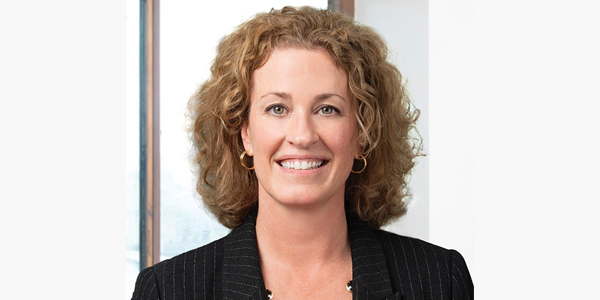Abigail Clifford is the group president and chief operating officer, and CEO designate of the BF&M group of companies. In her role, she oversees BF&M’s property and casualty insurance business and the operational areas of the business including legal, compliance and technology.
Since she joined BF&M in 2013, she has served in a number of leadership roles, including group chief operating officer and EVP, Life and Health Division. Prior to joining BF&M, Ms Clifford was group chief human resources officer at PartnerRe.
A Bermudian, Ms Clifford Abigail holds an undergraduate degree from Washington College and a master of science degree from Johns Hopkins University.
In this Q&A, she gave inspiring insights into her career journey, advice that could benefit young women aspiring to be leaders and thoughts on how organisations can address the underrepresentation of women at senior management level.
What are the main attributes you needed to rise to the male-dominated executive level?
Regardless of operating in a male- or female-dominated environment, there are traits that can help support success.
Be curious about your organisation, aim to understand the context and bigger picture. An early lesson in my career was assuming that I was the only one who hadn’t had the experience at a business challenge we faced. Don’t assume that everyone around you has the experience or knowledge. Don’t be afraid to ask questions and seek clarification.
Continue to develop your skills. Your career is your own. Take advantage of learning opportunities. Specifically, raise your hand for challenges or opportunities, even when it may be perceived as a lateral move. It shows engagement, commitment, and adaptability. These traits are invaluable and get noticed.
Women are not always comfortable taking credit or promoting the value they bring. This is important and should be framed as part of your job. You need to connect the dots for those around you.
What advice would you have for a woman starting out in her career with ambitions of reaching the top tier of management?
I am so energised by the next generation of women leaders. They have a clearer sense of balance, tend not to be afraid to ask for what they want, and are more inclined to speak up and provide valuable, constructive challenge. That being said, I can offer a few suggestions.
- It is helpful to have clarity on what motivates you and therefore, what kind of environment you want to work in to thrive. This doesn’t happen overnight. It takes time, self-reflection, and experience. If the environment is not working for you, i.e. you are not learning or growing, I would encourage you to find one that does.
- It has always been a priority for me to learn and understand the business. I am surrounded by smart people and regularly spend time with my peers outside of my expertise to help increase my understanding. My experience is that when asked, people are generous in their sharing. Be willing to listen, ask questions and reciprocate with your support.
- There are often different pressures for women than for men. It is important to find colleagues — both men and women — whom you trust, who can be your confidantes and who want you to succeed. You need colleagues who can give you feedback on your blind spots, share tough messages and provide support.
- The prior CEO of Pepsico, Indra Nooyi, publicly states that she believes that women can’t have it all. This resonates for me and is an important message. There is always a compromise. There are times when your professional life thrives and your personal life is sacrificed, and vice versa. It helps to be aware of this to relieve the pressure some of us put upon ourselves. Professional and personal support networks are crucial and may change over time.
What are the main things that need to happen for women to be better represented at the executive level?
Sponsorship is critical. When I first joined the reinsurance sector at the beginning of my career, I was fortunate to have an executive, male boss who also became my sponsor. He created a new role specifically for me, solicited my input, gave feedback, endorsed me publicly and ensured my compensation reflected my worth. This had a lasting impact on the way I viewed my value and my career trajectory.
A sponsor recommends you for, or even creates, stretch opportunities. A sponsor challenges you by providing feedback and insights, models leadership behaviours and is someone you trust.
Hewlett Packard conducted an internal report which indicated that men apply for jobs when they meet only 60 per cent of the qualifications whereas women only apply if they reach 100 per cent. This plays out at work. It means that women are less likely to promote themselves or apply for stretch roles.
Executive leadership and management teams have huge influence on the culture of organisations and ultimately whether women leaders can thrive. They need to understand and endorse the concepts of sponsorship.
More fundamentally, they need to be aware. Unconscious bias must be addressed and mitigated by leadership. This includes examining compensation, recruitment, promotions, and talent development practices to ensure that inclusive decisions and fair, equitable practices are in place.
When I first started my career, there were comparatively very few women in leadership roles. There was also a lack of diversity among those women that were. This is slowly changing. Representation is critical, so having diverse women at the table is essential. “Diversity” includes race, sexual orientation, with children, without children, of varied ages and backgrounds, all of which bring valuable, enriching perspectives to the table.
There is also much work to be done around board composition. Boards often lack diversity of every type, not just the representation of women. Ultimately, organisations can bring out the best in their people when they feel represented from the governance level down.

